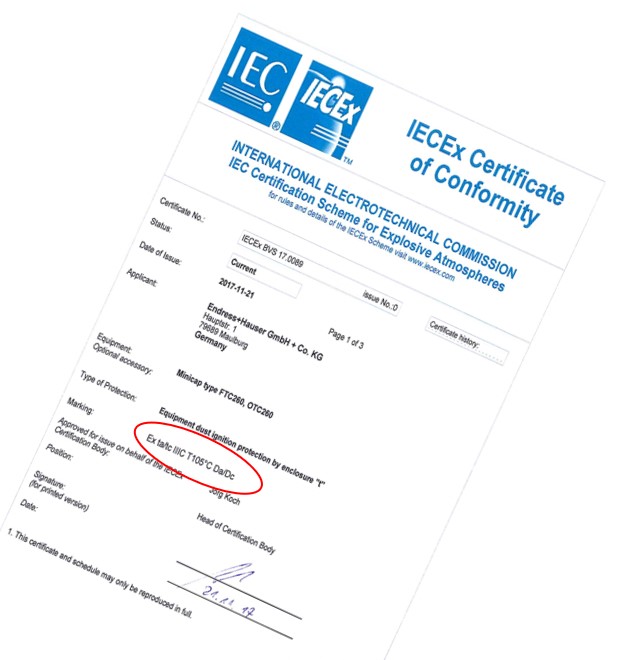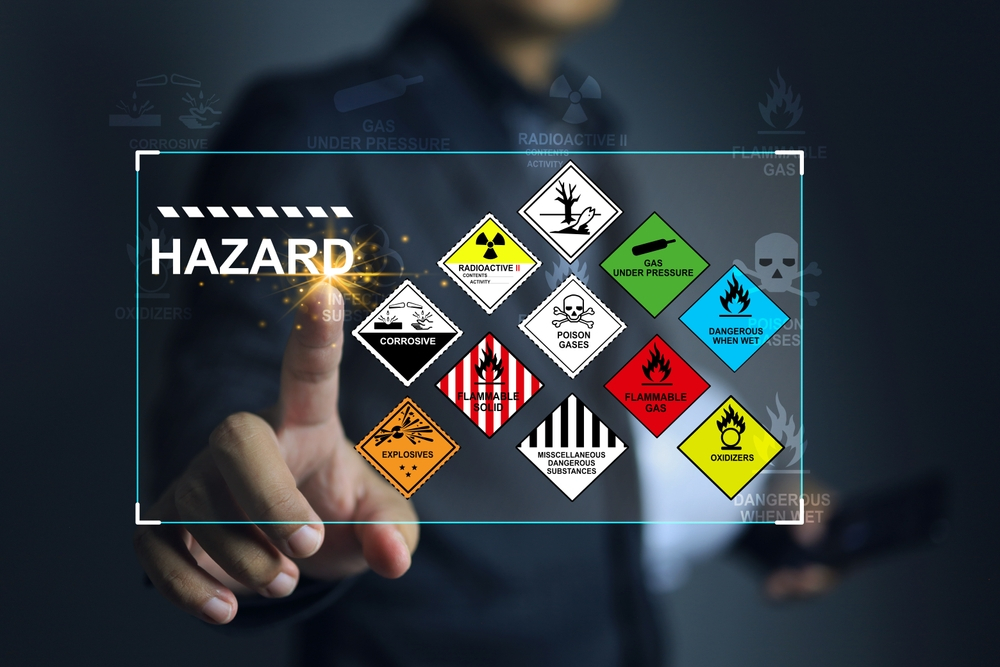9 Simple Techniques For Roar Solutions
9 Simple Techniques For Roar Solutions
Blog Article
What Does Roar Solutions Do?
Table of ContentsRoar Solutions for DummiesThe Single Strategy To Use For Roar SolutionsThe Main Principles Of Roar Solutions
In order to safeguard setups from a prospective surge a technique of evaluating and categorizing a potentially hazardous location is required. The objective of this is to make certain the proper option and installment of tools to ultimately prevent an explosion and to guarantee safety of life.
(https://www.reddit.com/user/roarsolutions1/)
No tools should be set up where the surface area temperature of the equipment is higher than the ignition temperature level of the provided threat. Below are some typical dirt dangerous and their minimum ignition temperature level. Coal Dirt 380C 225C Polythene 420C (melts) Methyl Cellulose 420C 320C Starch 460C 435C Flour 490C 340C Sugar 490C 460C Grain Dirt 510C 300C Phenolic Resin 530C > 450C Aluminium 590C > 450C PVC 700C > 450C Soot 810C 570C The likelihood of the danger being existing in a focus high sufficient to trigger an ignition will certainly differ from area to location.
In order to classify this danger a setup is split right into areas of risk depending upon the quantity of time the hazardous is existing. These locations are referred to as Areas. For gases and vapours and dirts and fibres there are three zones. Zone 0 Zone 20 A hazardous atmosphere is extremely most likely to be present and might be existing for extended periods of time (> 1000 hours annually) and even continuously Area 1 Area 21 A harmful environment is possible yet unlikely to be present for extended periods of time (> 10 450 C [842 F] A classification of T6 suggests the minimal ignition temperature is > 85 C [185 F] Dangerous area electrical equipment perhaps developed for usage in higher ambient temperature levels. This would certainly showed on the score plate e.g. EExe II C T3 Ta + 60C( This indicates at 60C ambient T3 will not be exceeded) T1 T1, T2, T3, T4, T5, T6 T2 T2, T3, T4, T5, T6 T3 T3, T4, T5, T6 T4 T4, T5, T6 T5 T5, T6 T6 T6 A T Course ranking of T1 indicates the maximum surface area temperature generated by the tool at 40 C is 450 C. Assuming the linked T Class and Temperature ranking for the devices are suitable for the location, you can constantly utilize an instrument with an extra rigid Division ranking than needed for the area. There isn't a clear response to this inquiry unfortunately. It actually does depend upon the kind of devices and what repair work require to be carried out. Devices with specific test treatments that can not be carried out in the area in order to achieve/maintain 3rd party ranking. Should return to the manufacturing facility if it is prior to the tools's service. Area Repair Service By Authorised Worker: Difficult screening might not be called for however specific procedures might require to be complied with in order for the equipment to keep its third celebration ranking. Authorised personnel must be utilized to execute the work properly Fixing have to be a like for like replacement. New component must be thought about as a straight substitute calling for no special testing of the tools after the repair work is full. Each tool with a dangerous rating need to be evaluated independently. These are described at a high level listed below, but for more detailed information, please refer directly to the guidelines.
The smart Trick of Roar Solutions That Nobody is Discussing
The equipment register is a thorough database of devices documents that consists of a minimum collection of fields to recognize each thing's place, technical specifications, Ex-spouse classification, age, and ecological information. This details is critical for tracking and taking care of the equipment successfully within dangerous locations. In contrast, for routine or RBI sampling inspections, the grade will certainly be a mix of Detailed and Close evaluations. The proportion of Comprehensive to Shut assessments will certainly be established by the Tools Risk, which is examined based upon ignition threat (the possibility of a resource of ignition versus the chance of a flammable environment )and the harmful location category
( Area 0, 1, or 2). This variation will likewise influence the resourcing demands for job preparation. Once Great deals are specified, you can create tasting strategies based on the sample size of each Great deal, which describes the variety of arbitrary devices things to be examined. To establish the needed example size, 2 elements need to be examined: the dimension of the Lot and the classification of examination, which indicates the level of initiative that need to be applied( decreased, normal, or raised )to the assessment of the Lot. By integrating the category of inspection with the Lot size, you can then develop the ideal being rejected standards for an example, implying the allowable number of faulty products located within that sample. For even more details on this procedure, please refer to the Power Institute Standards. The IEC 60079 conventional advises that the maximum interval between evaluations need to not go beyond 3 years. EEHA assessments will also be conducted outside of RBI projects as component of set up maintenance and tools overhauls or repair services. These assessments can be credited toward the RBI sample dimensions within the affected Whole lots. EEHA assessments are carried out to identify faults in electrical devices. A weighted racking up system is necessary, as a single tool might have numerous faults, each with varying levels of ignition threat. If the consolidated score of both inspections is less than twice the mistake rating, the Whole lot is considered acceptable. If the Lot is still thought about unacceptable, it needs to undergo a complete inspection or justification, which might cause more stringent evaluation protocols. Accepted Great deal: The causes of any kind of mistakes are determined. If a common failure setting is found, additional tools may call for evaluation and fixing. Mistakes are identified by seriousness( Security, Stability, House cleaning ), making certain that immediate issues are assessed and attended to quickly to minimize any type of impact on safety and security or operations. The EEHA database need to track and record the lifecycle of faults together with the rehabilitative activities taken. Executing a durable Risk-Based Evaluation( RBI )method is vital for making sure compliance and security in handling Electric Devices in Hazardous Areas( EEHA) (hazardous area course). Automated Fault Rating and Lifecycle Monitoring: Effortlessly handle faults and track their lifecycle to improve inspection precision. The intro of this support for risk-based assessment further strengthens Inspectivity's position as a best-in-class solution for governing conformity, in addition to for any asset-centric assessment use case. If you are interested in learning much more, we welcome you to ask for a demo and find just how our service can transform your EEHA management procedures.
The Best Strategy To Use For Roar Solutions

In terms of explosive threat, a hazardous area is an environment in which an explosive atmosphere is existing (or might be expected to be present) in quantities that need special precautions for the building, installment and use tools. Roar Training Solutions. In this article we check out the difficulties dealt with in great post to read the workplace, the risk control procedures, and the needed expertises to function safely
These compounds can, in specific problems, form eruptive atmospheres and these can have major and terrible effects. Many of us are familiar with the fire triangular remove any kind of one of the three elements and the fire can not occur, but what does this mean in the context of harmful areas?
In the majority of instances, we can do little regarding the degrees of oxygen airborne, yet we can have considerable impact on sources of ignition, as an example electric devices. Harmful areas are recorded on the hazardous area category illustration and are determined on-site by the triangular "EX" indication. Here, among other essential details, zones are divided into three kinds relying on the risk, the possibility and period that an explosive atmosphere will exist; Area 0 or 20 is deemed one of the most harmful and Zone 2 or 22 is considered the least.
Report this page